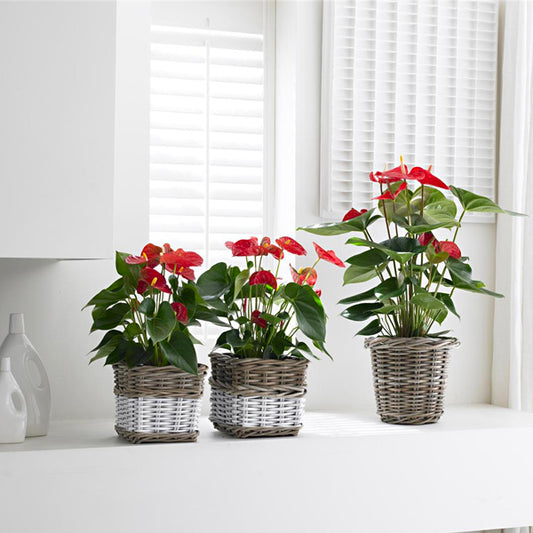What are Air Plants?

Air Plants belong to the bromeliad family and is a large group of plants in the Tillandsia genus. Tillandsia or Air Plants are epiphytes like orchids, they anchor to the trees with their small roots.
Air plants absorb moisture and nutrients through their leaves, instead of through their roots. Their roots are only there for anchoring them as they grow, but are not necessary to maintain and can be trimmed down without harm to the plant. Since air plants absorb moisture through their leaves, they prefer warm and humid conditions. Growing them at home in a dry environment would mean, keeping them hydrated by watering them regularly.
Do air plants bloom?

Yes, they will reward you with wonderful blooms if you love and take care of them. Most species of Tillandsia bloom only once in their life. Bloom spikes can be pink, purple, white, orange, red, or yellow, and generally in the late winter or spring. Sometime around the time of bloom, air plants also produce offsets or young plants. Separate these offsets from the mother plant by twisting or cutting them off. You can move the young offset to a new location when it’s about half the size of the mother plant.
How to water Air Plants?
Soaking the plants in a bowl or sink is the best way of watering. To water air plants this way, fill a bowl or sink with water and float the air plants in the water for 20 minutes to an hour once a week. Then, take the plants out of the water, tip them upside down so any excess water can drain away, this will eliminate the chances of water staying between the leaves for a longer period to avoid any infections or diseases.
Spray misting is insufficient as the sole means of watering but may be beneficial between regular waterings in dry climates to increase the humidity.
Light
Air plants should be kept where they receive good bright in-direct light. If they are kept in a very bright place, they may require frequent watering or misting as it will deplete the plants of their moisture. The general thumb rule is the higher the humidity of the air the higher light will be tolerated.
Water
Choose the water carefully for watering Air plants, they don’t do well with hard water or high salt content in the water. Also, avoid softened or distilled water however Reverse osmosis or RO water or Rainwater is a good choice for these plants.
Air Circulation
Do not keep the plants wet or soaked for a long period of time. The plants must be dried quickly (usually within 1- 2 hours) after watering. Keep the plants in a naturally ventilated place, which is very important for their growth and survival.
Temperature
Air plants will do well in warm and humid climatic conditions (Between a range of 20C to 35C). They are sensitive to low temperatures below 10C.
Fertilizer
Air Plants do not require fertilizer as they can grow and survive on the nutrients that’s is available in the water and air. If you are keen, mist a liquid-based fertilizer diluted (1/4 recommended strength or 0.25g per litre of water) once a month.


